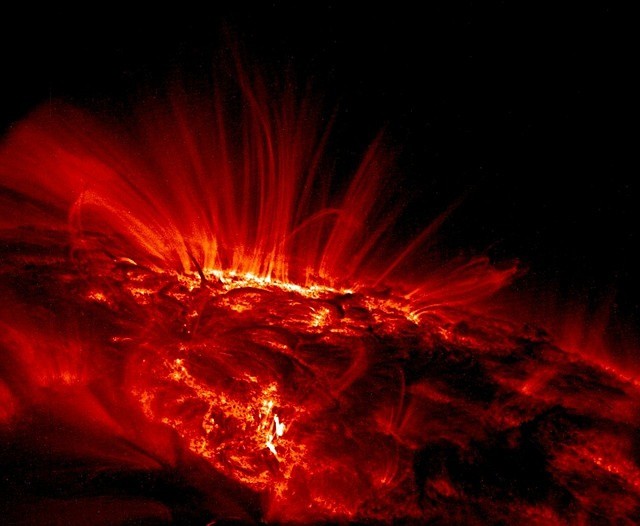A solar storm alert from space weather authorities indicates that a sunspot released dangerous X-class solar flares, the highest in its category.
According to reports, a radio blackout struck the Pacific Ocean area as highly-energized particles hit Earth recently. Details surrounding the incident remain limited as of Monday morning, July 3. However, disruption to radiofrequency is likely to continue in the coming hours.
The solar flare came from a sunspot containing a "beta-gamma-delta magnetic field" that erupted over the weekend. In previous solar explosions, sunspots from our Solar System's Sun are known to be gateways of solar flares. While other typical solar storms like coronal mass ejections or CMEs, as well as solar winds, are not life-threatening to Earth, they can be catastrophic in a theoretical sense.
More than a century ago, a massive solar storm struck our planet, resulting in the disruption and damage of early human technology such as telegraph systems at that time. A significantly related solar event also occurred in the early 21st century, when internet disruptions have been reported. These disruptions are caused by geomagnetic storms and solar radiations produced by the said solar storms, in addition to radio blackouts.
Solar Storm Alert

In its recent solar storm alert, the National Oceanic and Atmospheric Administration (NOAA) said the giant sunspot released X-class solar flares towards Earth and this resulted in a shortwave radio blackout over the Pacific Ocean, as cited from a report by the SpaceWeather.com.
The sunspot exploded on Sunday, July 2, which then produced an X1-class solar flare, according to the Solar Dynamics Observatory, which recorded the extreme solar event.
Also Read : Incoming Storm: Solar Winds to Arrive on Jan. 25
Sunspot AR3354
Sunspot AR3354 is said to be seven times larger than the Earth as of last week before Sunday, according to the website Space.com. It appeared last week on Monday, June 26, then it grew at unprecedented rates, making it visible to the naked eye. Yet, skywatchers have been warned to protect their eyes when gazing to the gargantuan sunspot.
In a Twitter post last week, solar physicist Keith Strong stated the sunspot region had been growing rapidly in a span of 24 hours, transforming from a chunk of solar dot into a massive spot larger than the Earth.
As mentioned earlier, AR3354 developed a gamma magnetic field which could produce strong solar flares, according to SpaceWeather.com.
Prior to the reported X-class solar flares, the NOAA predicted that the solar storm from the giant sunspot will emit a medium or M-class solar flares on Wednesday, July 28.
What are Solar Flares?
A solar flare is a phenomenon emanating from our Sun's activity and a result of the constant interaction between the star's magnetic field, particularly the release of magnetic energy related to sunspots, according National Aeronautics and Space Administration (NASA).
The recent solar flare is relatively weaker than the mega flare of October 2003, also called the Halloween solar storm. It even caused satellite communication blackouts and even localized power outages in Sweden.
Related Article: Solar Storm Alert: Geomagnetic Storm Likely to Hit Earth on Sunday
© 2025 NatureWorldNews.com All rights reserved. Do not reproduce without permission.





